Purple Dead Nettle

Blog by Mike Gasper
Purple Dead Nettle
(Lamium Purpureum)

One of the first wild edibles to emerge during the spring is Lamium Purpureum also known as purple dead nettle. This medicinal herb can be found abundantly in some of our backyards. To most it is a nuisance weed that will blanket large areas. But to others it can prove to be very useful.
Although it can be a bother to some, it can be used medicinally or as an edible used in salads, soups, teas and pestos. This plant also helps our tiny pollinators when they are first emerging in the spring providing a much needed food source.
Purple dead nettle is a member of the mint family and will have a square stem with four distinct sides and opposite pairs of leaves.The rough heart shaped leaves gradually turn a purple hue as they work their way upward along the stem and are accompanied by small purple tubular flowers around the top.
This plant has many medicinal properties to which it can be used as an Astringent, diuretic, antifungal, anti inflammatory and antibacterial.
In the field we like to use it as a poultice for wounds. It can easily be ground up with clean water or in a pinch chewed and then applied to the bite or wound. It can help treat cuts, rashes and other skin irritations you may experience while out in the woods. Another useful field application is using the fresh leaves in tea. But be careful to monitor its consumption because in large quantities it can have a laxative effect .

Most plants are not readily available during all seasons so one way we can utilize purple dead nettle all year is by dehydrating its leaves and flowers . First remove the stems and then dehydrate the leaves and flowers at 115 degrees for roughly 11 hrs or until completely dry.

We store ours in glass mason jars for future use and easy identification. Because of its diaphoretic properties adding a scoop or two to a cup of hot water will help warm you up during the winter months . It has a very earthy smell and tastes quite refreshing. It is also a natural antihistamine so it can also be used during the spring and summer months to help with allergy symptoms.


Important tips to remember when collecting and using any plants or herbs is to always check for any bugs that may be living on your wild forages ( a good shake when collecting and gentle wash or quick soak in cool water will usually do the trick ).
Another reminder is please do not forage any wild edibles in a location that may contain pesticides or other harmful chemicals. Be aware of the surroundings and take time to carefully choose and properly identify your harvest.
Finally when using any wild harvested medicinal be sure to check with your doctor for any conflicting medications or potential allergies.
